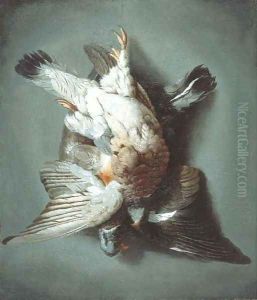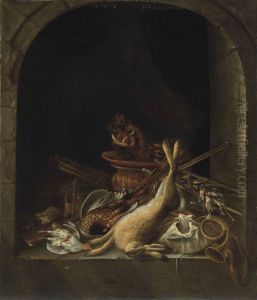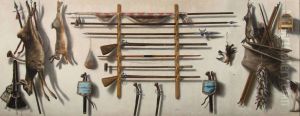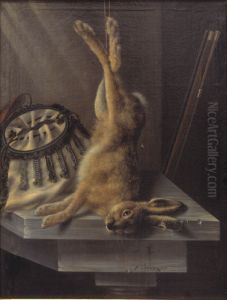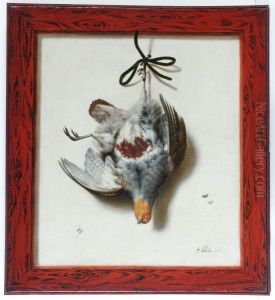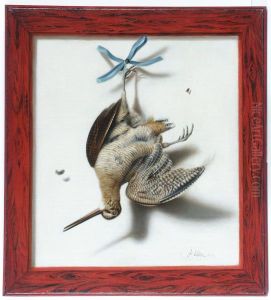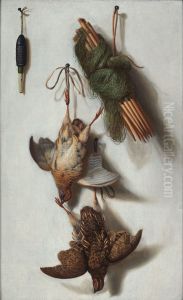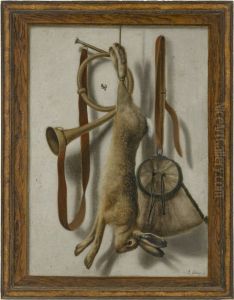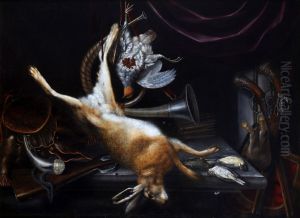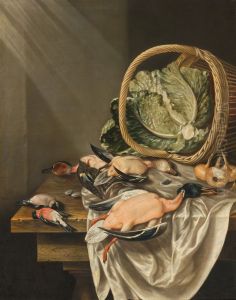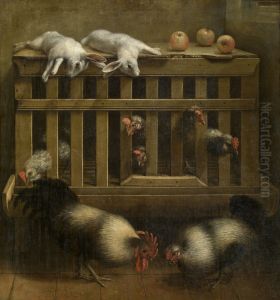Jacob Biltius Paintings
Jacob Biltius, also known as Jacob Bilt, was a Dutch Golden Age painter born in 1633 in The Hague, Netherlands. He is primarily known for his still life paintings, especially those depicting game and hunting scenes. Biltius was a pupil of the prominent Dutch painter Jan Davidsz. de Heem, who was one of the most famous still life artists of his time. Under de Heem's guidance, Biltius honed his skills in creating intricate compositions that showcased his ability to render textures and surfaces with a high degree of realism.
Biltius's works often featured dead game, such as fowl and hare, arranged in a naturalistic manner that was both evocative and rich in detail. His paintings reflected the Dutch tradition of hunting still lifes, which were popular among wealthy patrons who enjoyed the sport of hunting. Biltius's compositions are noted for their fine detail, careful arrangement of elements, and the skilled use of light and shadow to create depth and volume. His color palette was typically subdued, with a focus on earthy tones that emphasized the naturalistic representation of his subjects.
The artist's career was predominantly based in The Hague, where he became a member of the painters' confraternity, the Confrerie Pictura, which was a common practice among artists of the time to establish their professional status. Through this affiliation, Biltius would have engaged with other artists and patrons, furthering his career and reputation.
Despite his evident skill and the quality of his work, Jacob Biltius did not achieve the same level of fame as some of his contemporaries. Little is known about his personal life or his clientele, as historical records are scarce. He passed away in 1681 in The Hague, and while he may not be as widely recognized as other Golden Age painters, his work still offers a fascinating glimpse into the still life genre of the period and the cultural practices surrounding hunting and game.
Biltius's paintings are held in various collections and have been displayed in museums, allowing art enthusiasts and historians to appreciate the contributions he made to Dutch Golden Age painting. His attention to detail and the high level of craftsmanship in his still lifes continue to be admired by those who study and enjoy 17th-century Dutch art.
